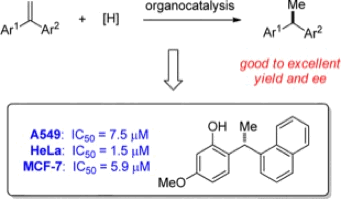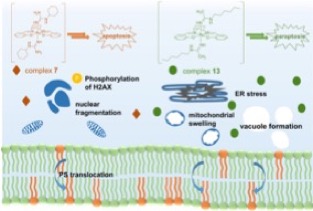The research in the Zhu Group lies at the interface of chemistry and biology in the study of the mechanisms of anticancer drugs, especially DNA-damaging agents, and the development of innovative anticancer complexes. Our interdisciplinary approach conjoins bioinorganic chemistry, chemical biology, medicinal chemistry, and drug discovery, with a focus on the synthesis and biological evaluations of multifunctional and non-conventional metal-based anticancer agents and on the development of photoactivatable anticancer prodrugs and functionalized nanomedicine.
Research Interests
Anticancer drug development and mechanism; chemical biology; nanomedicine; drug delivery
Current Projects
Synthesis and biological evaluation of novel metal-based anticancer agents
Platinum- and ruthenium-based anticancer agents are functionalized with moieties that specifically target pathways related to drug resistance. Heterodinuclear Pt-Ru anticancer complexes are obtained. These complexes have improved anticancer activity against cisplatin-resistant cancer types.

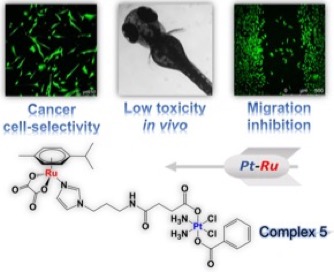
Development of cancer-specific nanomedicine to conquer cisplatin resistance
To develop platinum-based anticancer complexes with improved anticancer activity and with reduced side effects, nanomaterials are utilized as carriers to deliver anticancer agents specifically into cancer cells. We choose carbon or silicon-based nanoparticles or nanosheets with low toxicity and functionalize them with cancer-targeting moieties. Platinum prodrugs are loaded onto the nanomaterials and biological evaluations are carried out.
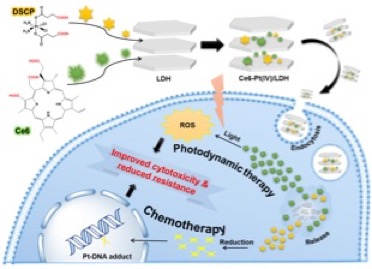
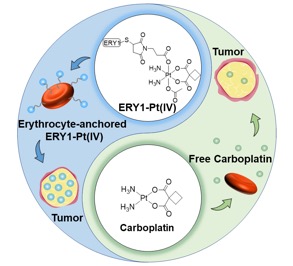
Screening of biologically active small-molecule anticancer agents and their target validation
Another current research interest is to develop small-molecule anticancer agents by screening library of compounds and validation of their biological targets. Novel organic and inorganic compounds are screened against in vitro cancer models, and the leading compounds are further investigated for their biological targets and mechanisms. Structure-activity relationships help us design more potent, next generation anticancer agents. On the other hand, we propose new anticancer drug targets and establish screening assays to find the leads.
